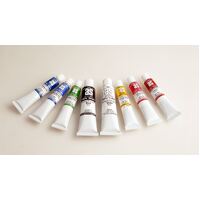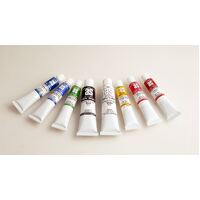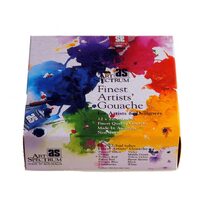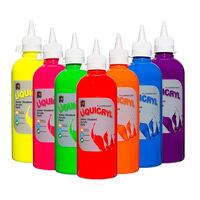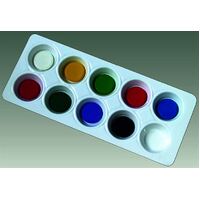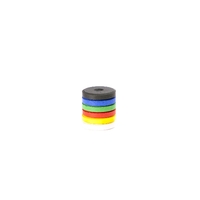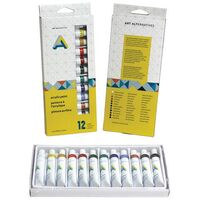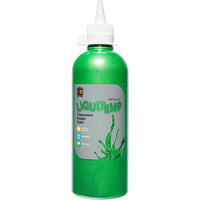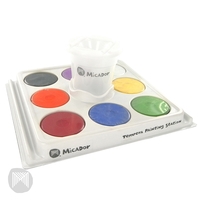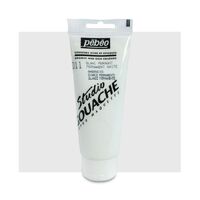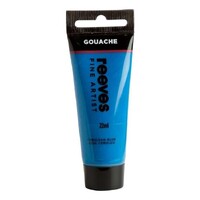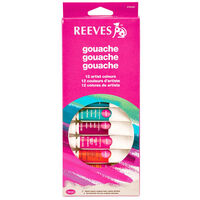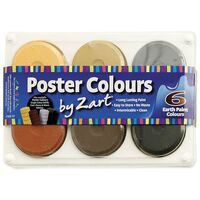Gouache Paints
Shop High-Quality Gouache Paints for Artists of All Levels
Gouache is a highly pigmented, fast-drying paint that delivers a rich, opaque finish, making it perfect for artists who want bold, vibrant colours with smooth coverage. It can be reactivated with water, allowing for easy blending, layering, and corrections, giving you complete control over your artwork. With its matte, velvety texture and excellent coverage, gouache is ideal for everything from fine art to illustration and design projects. Great for creating detailed compositions or expressive brushwork, gouache offers versatility, depth, and professional-quality results. Whether you're working on fine art, illustration, calligraphy, or design projects, gouache gives you the flexibility and control to bring your vision to life.
Explore Top Gouache Paint Brands & Sets
We have a wide range of gouache paints to suit every need. From starter sets with carefully curated colours to individual professional-grade tubes, you'll find everything required to bring your creative ideas to life.
To enhance your gouache painting experience, we also stock a variety of essential accessories, including high-quality brushes for smooth application, palettes for effortless colour mixing, and the perfect paper and surfaces to achieve the best results. No matter your style or skill level, our collection ensures you have the right tools to explore, create, and master gouache painting with confidence.
Mastering Gouache Techniques
This versatile medium allows artists to experiment with a variety of techniques to achieve different effects. Whether you're looking for soft blends, bold textures, or fine details, mastering these gouache techniques can elevate your artwork.
Wet-on-Wet Technique – Apply gouache to a damp surface for soft, fluid blends and smooth transitions between colours. This method is great for creating dreamy backgrounds and atmospheric effects.
Dry Brush Technique – Use a brush with minimal water for rough, textured strokes that add depth and movement to your work. Perfect for creating expressive details and layered highlights.
Glazing Technique – Layer diluted gouache over dry paint to create depth and subtle colour variations while maintaining a smooth, even finish.
Lifting Technique – Reactivate dried gouache with a damp brush or cloth to lighten areas, create highlights, or correct mistakes. This unique feature of gouache offers flexibility and precision.
Sgraffito Technique – Scratch through a top layer of wet or dry gouache to reveal the colour beneath, adding fine details, texture, and contrast to your artwork.
By experimenting with these techniques, you can unlock the full potential of gouache and bring your creative vision to life with rich colours and dynamic textures.
Shop Gouache Paints Online with Fast Australia-Wide Delivery
Finding the right gouache paint is easy with Oxlades Art Supplies! Our online store makes it simple to browse, compare, and order your favourite gouache brands, all from the comfort of your home. With competitive prices, expert advice, and fast shipping across Australia, we’re your trusted source for high-quality gouache paints.
Ready to elevate your artwork? Explore our collection of gouache paints today and bring your creativity to life!
Gouache Paints FAQs
Gouache is a type of paint that is similar to watercolour but has additional properties that make it distinct. It is an opaque watercolour paint, meaning that it contains white pigment and dries to a matte finish, allowing for better coverage compared to traditional transparent watercolours.
Key characteristics of gouache paint:
Opacity: Gouache is known for its opacity, which means it can effectively cover underlying layers. This makes it suitable for techniques where you want to hide or modify previous layers of paint.
Water Solubility: Like watercolor, gouache is water-soluble. It can be diluted with water to create a more transparent effect, similar to watercolor techniques, or applied more thickly for a more opaque result.
Matte Finish: Gouache dries to a matte finish, giving it a distinct appearance. This can be different from the glossier finish of some other types of paint.
Versatility: Gouache is versatile and can be used in various art applications, including illustration, design, and fine art. It is often used for creating detailed and vibrant artworks.
Reactivation: One unique feature of gouache is that it can be reactivated with water even after it has dried. This allows for reworking and blending colors on the painting surface.
Artists often choose gouache for its ability to provide both opaque and transparent effects, making it suitable for a wide range of artistic styles and techniques. It's a popular choice for artists who want the flexibility of watercolor with the added benefit of opacity.
Gouache is an excellent choice for beginners due to its forgiving nature. Its opacity allows for easy correction and layering, providing beginners with the flexibility to experiment and make adjustments. The versatility of gouache is another advantage, as it can be used in both opaque and transparent applications. This enables beginners to explore various techniques, from creating thin washes reminiscent of watercolor to applying thicker, more opaque layers. The medium's quick drying time and the ability to layer without waiting for complete drying make it particularly accessible for those who want to work continuously. Additionally, the matte finish of dried gouache contributes to a visually distinctive quality, setting it apart from other paint finishes. Overall, gouache's adjustability, accessibility, and unique characteristics make it a welcoming choice for beginners looking to explore the world of painting.
While gouache has its advantages, it's important to note that every artist has their preferences, and the best medium for a beginner ultimately depends on individual interests and goals. Some beginners may also choose to explore watercolour or acrylic paint, which have their own sets of characteristics and advantages. Starting with the medium that you find most enjoyable and comfortable is key to developing your skills and artistic style.
Gouache is traditionally used on paper rather than canvas. Paper provides a more absorbent surface that works well with the water-based properties of gouache. The matte finish of gouache complements the texture of paper, resulting in a cohesive and visually appealing effect.
Canvas, on the other hand, is commonly associated with acrylic and oil paints. The texture of canvas can be less receptive to the water-based nature of gouache, and the absorbency might not be as optimal as on paper. Additionally, the flexibility of canvas can lead to issues with cracking if gouache is applied too thickly.
That being said, artists are known for experimenting with different surfaces, and some may choose to use gouache on specially prepared canvases or canvas boards. If you decide to try gouache on canvas, it's advisable to choose a canvas that has been primed or treated to enhance its suitability for water-based paints. However, for traditional use and optimal results, paper remains the preferred surface for gouache painting.
Gouache is a unique paint known for its vibrant, opaque finish and versatility. It blends easily, layers beautifully, and can be reactivated with water even after drying. This makes it ideal for artists who want rich, matte colours with the flexibility of watercolour and the boldness of acrylic.
While both are water-based, gouache is opaquer than watercolour, meaning it covers surfaces more completely without allowing the background to show through. Watercolour is more transparent and relies on light layers, whereas gouache provides solid, intense colour with a smooth, velvety finish.
Avoid applying gouache too thickly, as it can crack when dry. Additionally, don’t mix too much water, or it may lose its opacity. Gouache isn’t waterproof, so sealing your work is important if you want to protect it from moisture. Always use the right paper to prevent warping and achieve the best results.
Let us know if you need help finding the perfect gouache paints and accessories for your next project!

